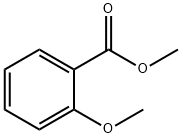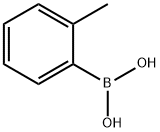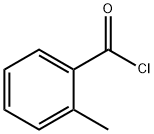A5391012
2-Methoxybenzaldehyde , 98% , 135-02-4
Synonym(s):
o-Anisaldehyde;2-Methoxybenzaldehyde;o-Anisaldehyde;Salicylaldehyde methyl ether
CAS NO.:135-02-4
Empirical Formula: C8H8O2
Molecular Weight: 136.15
MDL number: MFCD00003308
EINECS: 205-171-7
| Pack Size | Price | Stock | Quantity |
| 5G | RMB23.20 | In Stock |
|
| 25G | RMB28.00 | In Stock |
|
| 100G | RMB63.20 | In Stock |
|
| 500G | RMB244.00 | In Stock |
|
| others | Enquire |
Update time: 2022-07-08
PRODUCT Properties
| Melting point: | 34-40 °C(lit.) |
| Boiling point: | 238 °C(lit.) |
| Density | 1.127 g/mL at 25 °C(lit.) |
| FEMA | 4077 | O-ANISALDEHYDE |
| refractive index | 1.5608 |
| Flash point: | 244 °F |
| storage temp. | 2-8°C |
| solubility | Solubility Slightly soluble in water; soluble in ethanol |
| form | Low Melting Crystalline Mass |
| Specific Gravity | 1.127 |
| color | Light yellow to pale brown |
| Odor | at 10.00 % in propylene glycol. sweet powdery hawthorn guaiacol vanilla acetophenone almond |
| PH Range | Non1 uorescence (3.1) to green 1 uorescence (4.4) |
| Odor Type | anisic |
| biological source | synthetic |
| Water Solubility | insoluble |
| Sensitive | Air Sensitive |
| JECFA Number | 2062 |
| BRN | 606301 |
| Major Application | Battery, hair dyes, bird repellents, cosmetics, antibacterial, antipyretic |
| LogP | 1.72 |
| CAS DataBase Reference | 135-02-4(CAS DataBase Reference) |
| NIST Chemistry Reference | Benzaldehyde, 2-methoxy-(135-02-4) |
| EPA Substance Registry System | Benzaldehyde, 2-methoxy- (135-02-4) |
Description and Uses
o-Methoxybenzaldehyde has a faint, sweet, floral odor. It blends well with cassia. It has a spice-like flavor, quite bitter above 30 - 40 ppm. May be prepared from salicylaldehyde and dimethyl sulfate in weak alkaline solution.
2-Methoxybenzaldehyde has been used to examine the acaricidal activity of Periploca sepium oil and its active component against Tyrophagus. It has also been used to obtain good enantioselectivities using Cu(OAc)(2)-bis(oxazolines) via hydrogen bonding in asymmetric Henry reaction.
Safety
| Symbol(GHS) |  GHS07 |
| Signal word | Warning |
| Hazard statements | H315-H319-H335 |
| Precautionary statements | P261-P264-P271-P280-P302+P352-P305+P351+P338 |
| Hazard Codes | Xi |
| Risk Statements | 36/37/38-36/38 |
| Safety Statements | 26-36-37/39 |
| WGK Germany | 2 |
| RTECS | BZ2610000 |
| F | 9-23 |
| TSCA | Yes |
| HS Code | 29124900 |
| Toxicity | LD50 orally in Rabbit: 2500 mg/kg LD50 dermal Rabbit > 5000 mg/kg |





